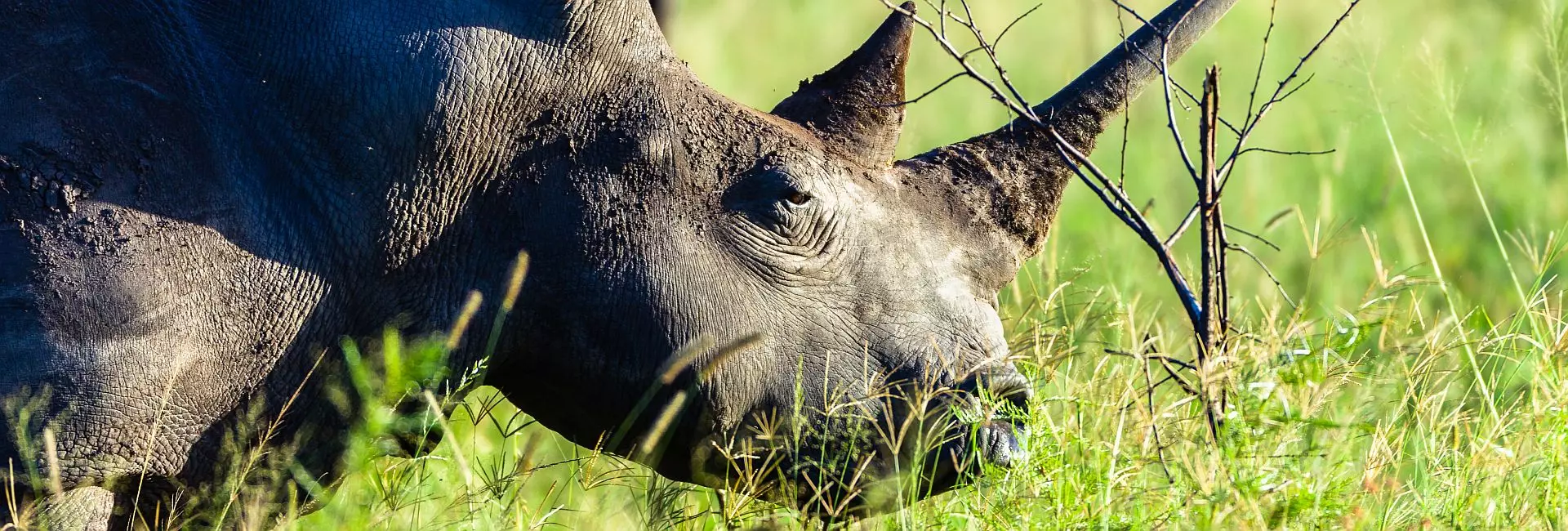The Zululand region of South Africa is known for being one of the most biodiverse wildlands in the nation – but could you imagine coming face-to-face with the country’s iconic species? Luckily for some of our recent volunteers, such a dream has become reality – just take Naomi Morneau’s word for it!
Last month, Naomi didn’t just become a vital part of the volunteer team – she also became ‘camera person’ for the day, capturing the incredible moment that a curious rhino decided to take a closer look at the game drive vehicle!
Sometimes secretive but often temperamental, rhinos are notoriously tough to spot – a typical glance could be fleeting, and sometimes for the best, as rhinos have been known to give charge when startled. As seen in the video below, however, some rhinos can be brave – just look at how this bull approaches the vehicle before dashing off into the bushveld!
Due to being critically endangered, black rhinos are a priority species at the project and are monitored on a daily basis across the five Zululand reserves. Whether spotting one like this or having the rare opportunity to take part in ‘notching’ (the marking of a rhino), any encounter is an absolute privilege – something which is easy to understand, as Naomi’s video is absolutely breathtaking!
Elsewhere, the Zululand team were lucky enough to have a front-row seat to the moment a lioness attempted to hunt her prey: a warthog. Her first attempt saw the lionless losing her nerve when creeping towards a group of hogs, ultimately startling them and losing them. For her second attempt, the lioness devised a plan to flush the warthogs into an ambush with the help of her sister, who hid on the opposite side of the road. However, the ambush was over in a flash, with the warthogs making a narrow escape once again – you can get a sense of the action in the video below!
Lions typically hunt once or twice a week, so to see them miss out on a kill can be disappointing – a failed hunt means no food for the pack. However, the Zululand team and its volunteers will be keeping their eyes open for successful hunts in the future!
From lion chases to translocation of these beautiful big cats, the team have recently been working to alleviate the risk of inbreeding across reserves. Inbreeding is a serious threat to the African lion species, as it reduces fecundity (the long-term reproductive fertility or ability of a population). In addition to those effects, inbreeding can also reduce the genetic diversity of populations, making specimens more vulnerable to threats such as disease. Due to habitat loss in South Africa, conservation areas have been built but are ultimately limited for space, making it difficult for male dispersal. This, as a result, means that the risk of inbreeding typically hovers around 25%, and therefore the minimum requirement for a genetically sustainable population is 50 prides with no limits on dispersal.
Translocation is a solution which aims to overcome such limitations by mimicking natural dispersions between populations, thus assisting the flow of genes and expanding the lions’ range. The images below illustrate the capture of 4 sub-adult females who were relocated between two national parks as to supplement the gene pool of a re-introduced lion population – check them out!




Have we left you longing to volunteer at Zululand? Check out our project page to find out more!














